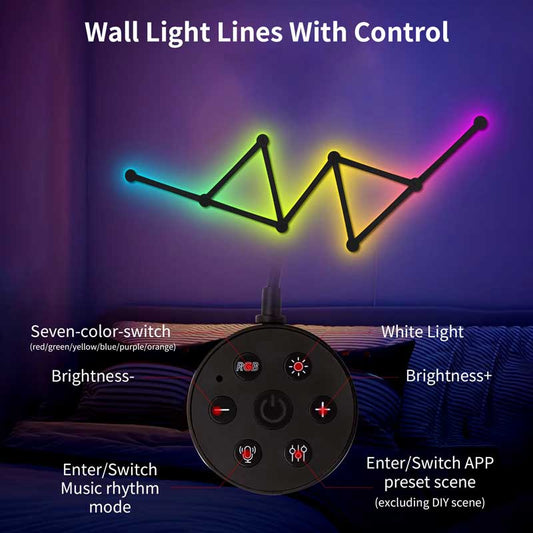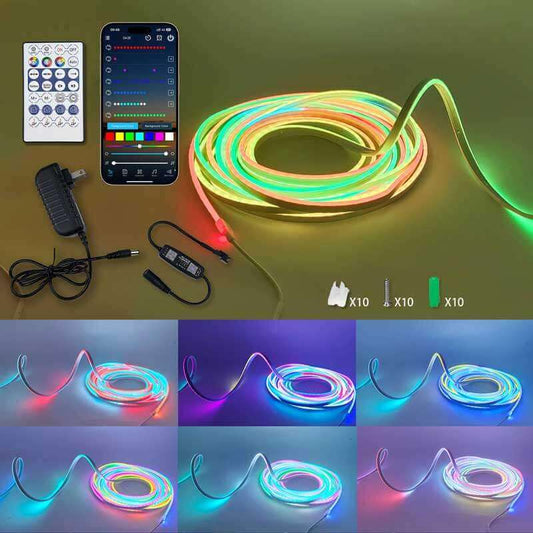How to Light Up Your Garden: Creative and Practical Ideas for Outdoor Illumination
Share
Lighting up your garden not only enhances its beauty but also extends the time you can enjoy your outdoor space after dark. Well-placed lights can highlight your landscaping, create ambiance, and improve safety. Here are some creative and practical ideas to light up your garden effectively.
1. Highlight Garden Features with Accent Lighting
Accent lighting draws attention to specific garden features such as trees, plants, sculptures, or water features. By strategically illuminating these focal points, you create visual interest and drama.
- Spotlights: Use spotlights to shine light directly on trees, statues, or interesting plant groupings. The focused beams can accentuate textures and shapes, creating shadows and adding depth.
- Up-Lighting: Place lights at the base of trees or large plants and direct them upward. This technique highlights the height and structure of the plants while casting interesting shadows on the surrounding ground.
- Path Lights: Installing small path lights along garden walkways will illuminate the way without overpowering the scenery. These lights can add both practicality and beauty to your garden.
Tip: Make sure to vary the height and angles of your accent lights to create layers of light and shadow for added depth.
2. Use Solar-Powered Lights for Eco-Friendly Lighting
Solar lights are an easy and energy-efficient way to illuminate your garden. Powered by the sun, they require no wiring and are low-maintenance. They're ideal for those looking for a quick and cost-effective lighting solution.
- Solar Path Lights: These are great for lighting up walkways, garden beds, or along the perimeter of your garden. Solar lights come in a variety of designs, including simple post lights, lanterns, and fairy lights.
- Solar Spotlights: Solar-powered spotlights can be placed at the base of trees or flowers to create a dramatic effect at night.
- Solar String Lights: These twinkling lights can wrap around trees, fences, or garden structures, providing a magical and festive atmosphere.
Tip: Solar lights may not be as bright as wired options, so consider using them in areas where low-level illumination is sufficient or to create a gentle ambient glow.
3. Create Ambient Lighting with String Lights
String lights are a versatile way to add warmth and magic to your garden. They can be draped over trees, fences, pergolas, or even along the ground.
- Hanging String Lights: Create a cozy, festive atmosphere by hanging string lights between trees or along the edges of garden structures like a pergola or trellis. These lights provide soft, ambient lighting that’s perfect for entertaining or relaxing outdoors.
- Fairy Lights: For a whimsical, magical effect, consider using fairy lights. These tiny, twinkling lights can be woven into tree branches, placed along garden fences, or used to highlight floral displays.
Tip: String lights are best for creating a gentle ambiance, so pair them with other lighting options like spotlights or path lights to ensure safety and visibility.
4. Use Floodlights for Large Gardens
For large gardens or spaces that need brighter illumination, floodlights are a great option. These lights cast a wide, even beam of light across a large area, making them ideal for security and broad illumination.
- LED Floodlights: These are energy-efficient and provide bright, white light. You can position them to light up large lawns, garden beds, or seating areas.
- Motion-Sensor Floodlights: If you want to improve security as well as lighting, consider adding motion-sensor floodlights to your garden. These lights automatically turn on when movement is detected, which is great for deterring intruders and lighting paths when needed.
Tip: Be mindful of the placement of floodlights to avoid creating harsh shadows or overwhelming bright spots. Aim for a soft, diffused effect.
5. Use Underwater Lights for Water Features
If you have a pond, fountain, or pool in your garden, consider adding underwater lights to enhance the beauty of your water features at night. Underwater lighting creates a stunning visual effect, highlighting the reflections and movement of water.
- Pond Lights: Waterproof LED lights can be placed at the bottom of the pond or submerged in fountains to create a shimmering effect on the water’s surface.
- Floating Lights: For a more magical and dynamic effect, use floating solar lights that move with the water.
Tip: Underwater lighting works best for ponds or fountains that have clean, clear water. Avoid placing lights too close to plants or algae, as they may block the light or create unpleasant reflections.
6. Add Lighting to Garden Structures and Fences
Garden structures like pergolas, arbors, and gazebos can benefit from added lighting to make them stand out at night. By adding lights to your structures, you create an inviting and cozy outdoor retreat.
- Under-Pergola Lights: Install dimmable LED strips or small recessed lights along the beams or posts of your pergola. These can create a soft, atmospheric glow and allow for nighttime dining or relaxation.
- Wall Sconces: Attach wall sconces to fences or garden walls to provide additional lighting while contributing to the overall aesthetic of your space.
- Post Lights: Install post lights along the perimeter of garden fences, along the edges of a deck, or on the corners of garden beds to provide subtle illumination.
Tip: Focus on lighting the structural elements of your garden for added depth and a sense of space, while avoiding harsh lighting that may overpower your plants or flowers.
7. Incorporate Step and Stair Lights for Safety
If your garden has steps, stairs, or uneven terrain, it’s crucial to ensure that they are well-lit for safety. Step lights and stair lighting can prevent trips and falls, while also adding a subtle, elegant effect.
- Step Lights: Install small, recessed step lights along the edges of stairs or pathways to provide consistent illumination.
- Wall-Mounted Lights: Wall-mounted lights near stairways or steps can highlight the way while creating an inviting, safe atmosphere.
Tip: For best results, place step lights along the riser of each stair, keeping the light source low to avoid glare.
8. Consider Motion Sensor Lights for Security and Efficiency
Adding motion sensor lights to your garden is a practical way to enhance both security and energy efficiency. Motion sensors ensure that the lights only turn on when movement is detected, reducing energy usage and providing instant illumination when needed.
- Security Lights: Install motion-activated lights near entry points, walkways, or garden gates to increase security and visibility.
- Path Lights: Motion sensor pathway lights can automatically illuminate your garden walkways when someone is walking by, ensuring safety and convenience.
Tip: Choose motion sensor lights with adjustable sensitivity to avoid unnecessary lighting from animals or passing cars.
Conclusion: The Right Lighting for Your Garden
Lighting your garden can create a welcoming atmosphere, highlight key features, and provide functionality for both safety and aesthetic appeal. To achieve the best results, consider layering your lighting by using accent, ambient, and task lights. Whether you choose solar lights for eco-friendliness, spotlights for drama, or string lights for a cozy vibe, the key is to match the lighting to your garden’s purpose and style. Experiment with different lighting techniques to transform your outdoor space into a beautifully illuminated garden retreat.




